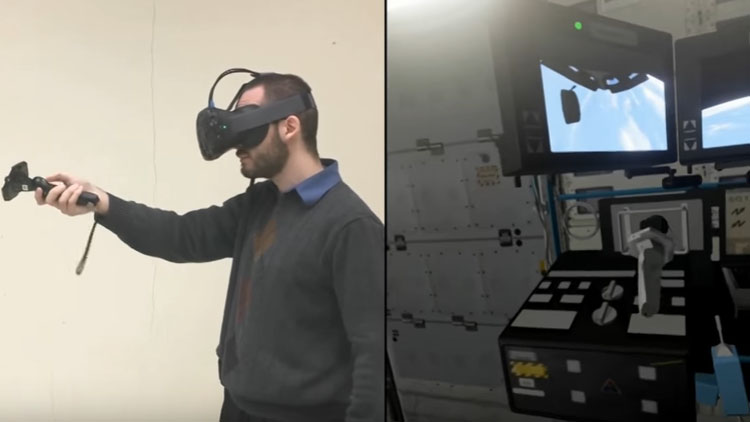Nasa is training its astronauts using mixed reality
“The more realistic the training feels, the faster you can respond in real-world, critical situations"

Nasa is no stranger to adapting new visual technology for education and training purposes and its latest project involves used mixed reality.
In collaboration with Epic Games’ Unreal Engine, the space agency has created a mixed reality International Space Station simulator which will be used to train astronauts.
Before Nasa will even consider sending one of its astronauts into space, they have to go through two years of training which consists of intense classes and simulations which prepare them for the weightless working conditions of a space shuttle and the International Space Station (ISS).
Simulating infinity and beyond
Previously, training for work on the outside of the International Space Station took place in something called a Natural Buoyancy Lab which is essentially a giant pool filled with millions of gallons of water. This was used in combination with Nasa’s life-sized models of the interior of a space shuttle and the International Space Station.
Though those physical facilities are excellent, they have limitations not least because of their size and capacity limits. Nasa hopes that adding a mixed reality experience into the mix alongside these existing facilities will allow astronauts more opportunities and time to train.
Nasa and Unreal released a video earlier in the month giving a glimpse of how the system would work and showing how it differs from an existing consumer-focused education simulation called Mission: ISS that Nasa released on Oculus.
This new mixed reality system is part of a wider virtual and mixed reality training initiative at Nasa which will allow astronauts to interact with a variety of instruments, machines and maintenance scenarios that they’ll encounter on board the space station.
Sign up for breaking news, reviews, opinion, top tech deals, and more.
As you can see in the video below the mixed reality app will be used in conjunction with physical tools that will effectively simulate working in zero gravity.
“The more realistic the training feels, the faster you can respond in real-world, critical situations, which could save your mission or even your life” said Nasa Software Engineer Matthew Noyes.

Emma Boyle is TechRadar’s ex-Gaming Editor, and is now a content developer and freelance journalist. She has written for magazines and websites including T3, Stuff and The Independent. Emma currently works as a Content Developer in Edinburgh.
